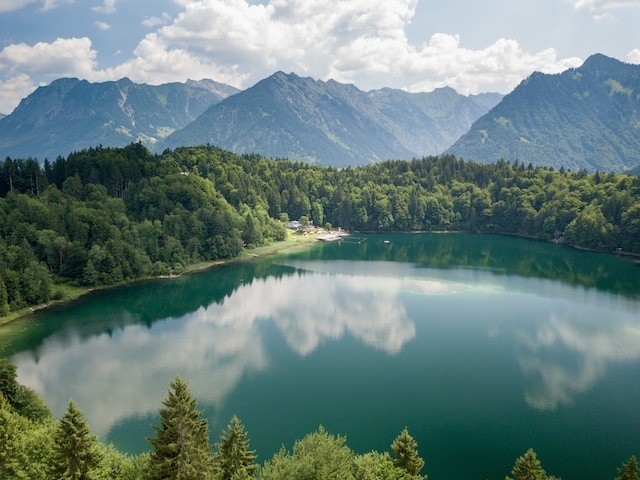Lake Tahoe, America's most famous alpine lake, is known for its stunning clarity and natural beauty.
In recent decades, the lake's waters had grown increasingly cloudy due to various factors, such as pollution, runoff, sedimentation, and invasive species.
Now, researchers from the UC Davis Tahoe Environmental Research Center have discovered a surprising and positive change in the lake's food web: the invasive shrimp are almost gone, and the beneficial zooplankton are returning.
This mysterious shift may be restoring the lake's legendary clarity, which has reached levels not seen since the 1980s.
Invasive shrimp are disappearing from Lake Tahoe

One of the main culprits of the lake's cloudiness was the shrimp Mysis, which were introduced in the 1960s to boost the fish population, but ended up disrupting the lake's ecosystem by preying on native zooplankton that help filter out algae and fine particles.
The shrimp also excrete nutrients that stimulate algae growth, further reducing the lake's clarity, as per The Mercury News.
Researchers have found that the shrimp population has declined dramatically in recent years.
In the past, they would catch 100 to 150 shrimp per night using a net on their research vessel. Now they catch only two or three.
Scientists are not sure what caused this decline, but they speculate that it could be related to climate change, predation by fish, or competition from other species.
They observed that another invasive species, the signal crayfish, has increased in abundance and may be eating or outcompeting the shrimp.
Zooplankton are returning to Lake Tahoe
The disappearance of the shrimp has opened up an opportunity for the native algae-eating zooplankton, especially Daphnia and Bosmina, which are indicators of good water quality.
These zooplankton help clear the lake by filtering out fine particles and algae. They also serve as food for fish and other aquatic animals.
Researchers have noticed that the zooplankton population has increased significantly in recent years, coinciding with the improvement of the lake's clarity.
They measure the presence of different populations using a net on their research vessel. They also measure the depth to which a 10-inch white plate, called a Secchi disk, remains visible when lowered into the water.
Scientists say that the lake is clearest when the zooplankton Daphnia and Bosmina are most abundant.
They also note that these zooplankton have adapted to avoid predation by staying deeper in the water during the day and rising to the surface at night.
Lake Tahoe's clarity is reaching historic levels
The result of these changes in the lake's food web is a remarkable improvement of Lake Tahoe's average visibility, which has increased from 52.8 feet to 71.7 feet in the past three years, as per Phy.org.
That's like seeing seven stories underwater. In the last five months of 2022, the visibility increased to 80.6 feet, a level not seen since 1988, when it was 81 feet.
The improvement of Lake Tahoe's clarity is a rare piece of environmental good news that could have implications for other lakes around the world that are facing similar challenges.
It also shows that nature can sometimes heal itself in unexpected ways.
However, scientists cautioned that the lake's clarity is still influenced by other factors, such as runoff, sedimentation, pollution, and weather.
This summer's runoff has created some temporary murkiness in some parts of the lake. They also warned that climate change could pose new threats to the lake's ecosystem and water quality.
Therefore, they urge continued monitoring and conservation efforts to protect and restore Lake Tahoe's legendary clarity for future generations.
© 2025 NatureWorldNews.com All rights reserved. Do not reproduce without permission.





